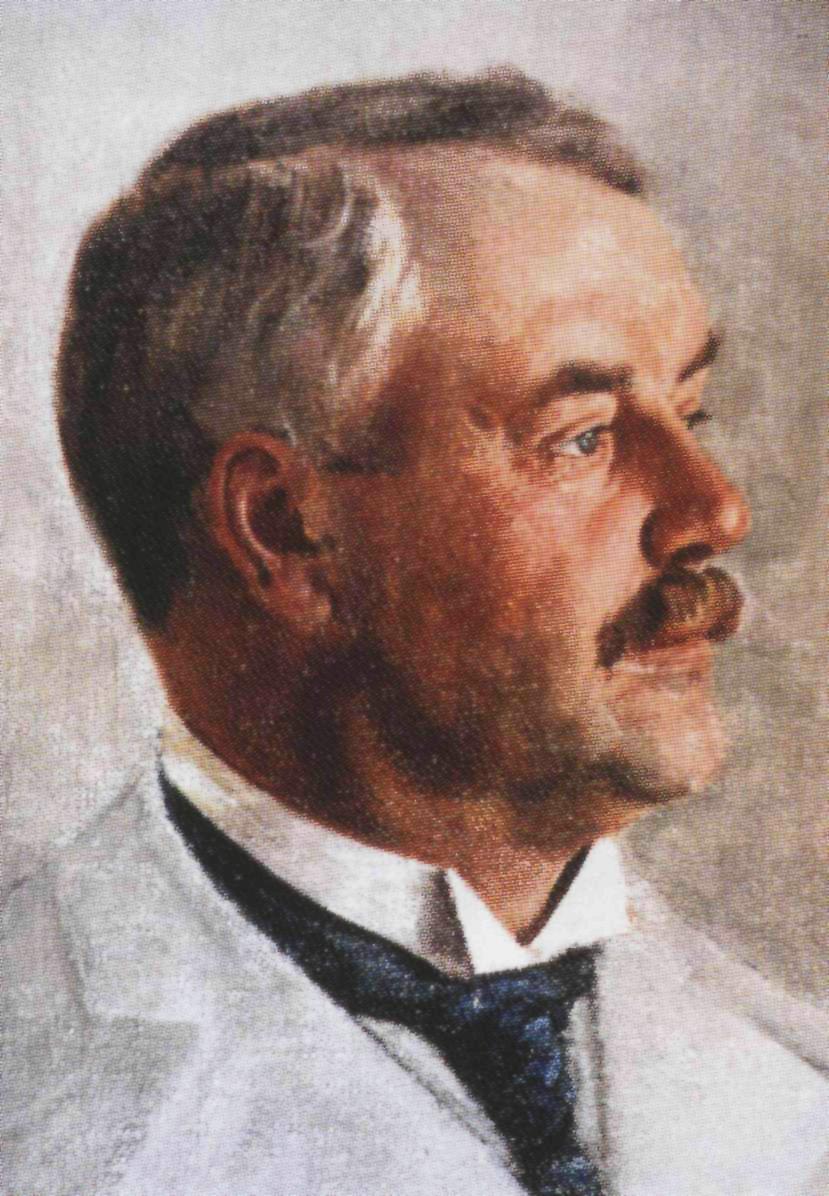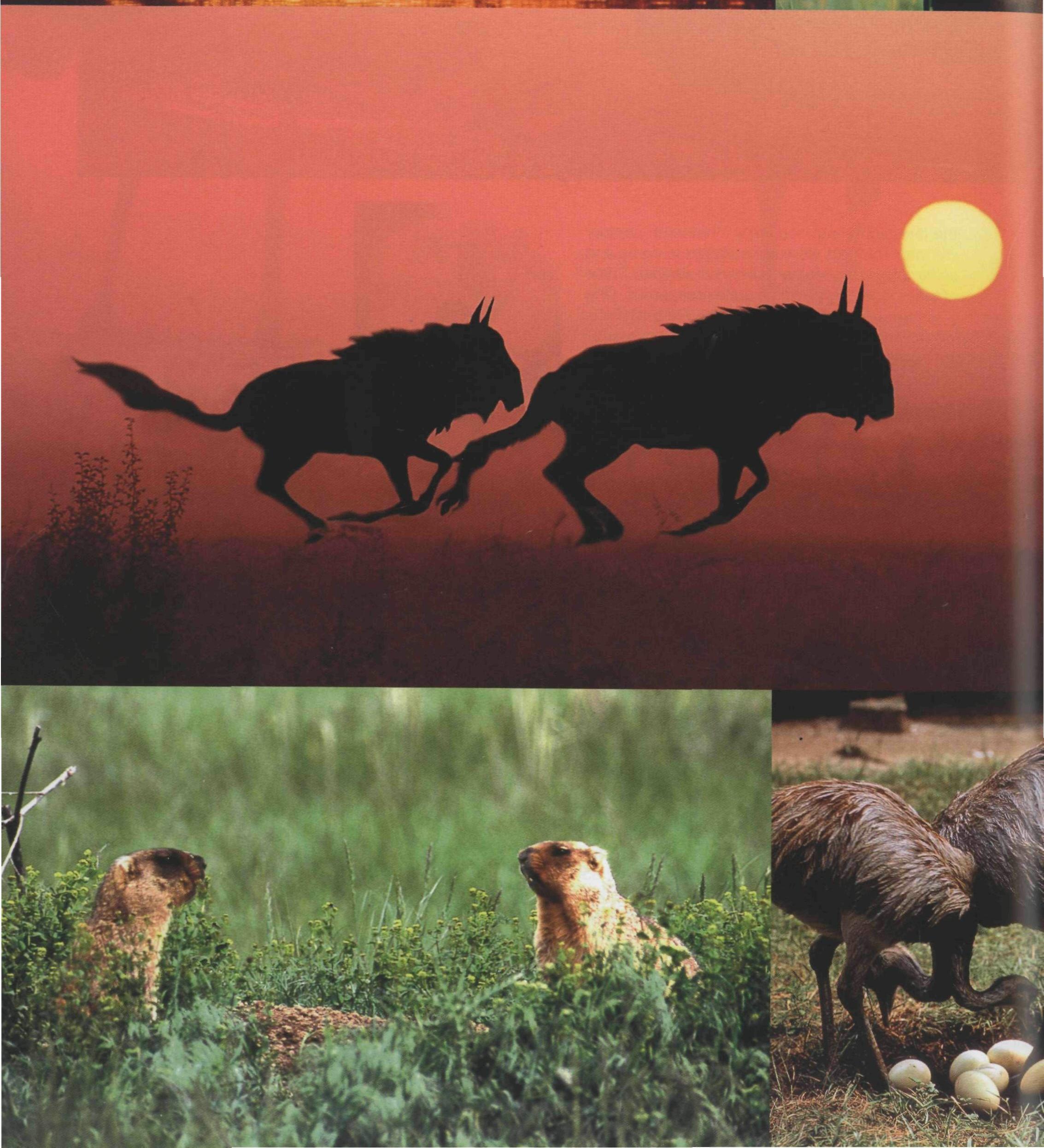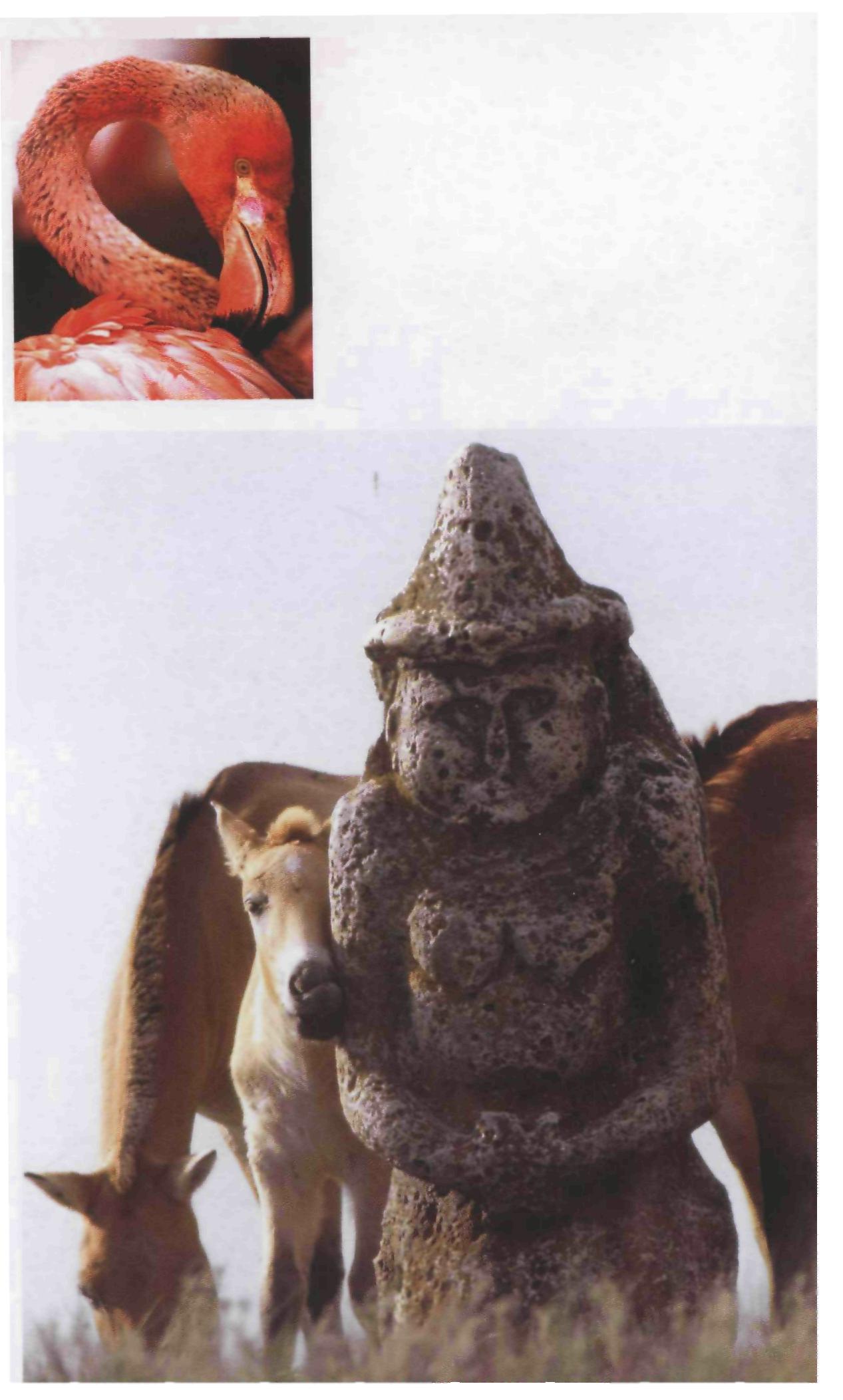
 KHERSON
KHERSON
A Russian fortification named Olexandr-Shantz, the pre-decessor of modern Kherson was built on the high right bank of the Dnipro during the Russian-Turkish war in 1737.
More...
Vasiliy Klimov, PhD in biology, is enamored of the National Reserve Askaniya-Nova which is situated in the steppes north of the Black Sea in Khersonska Oblast of Ukraine.
Askaniya-Nova National Reserve and its wonders.
 The official name of Askaniya-Nova is Askaniya-Nova Biosphere Reserve. It was founded in the 1880s by a German, Friedrich Falz-Fein as a protected area dedicated to the preservation of wildlife. The Ukrainian government designated it as a national park in 1919 and redesignated it as a reserve in 1921. This reserve, occupying over 30,000 hectares (core area — 11,000 hectares, buffer zones — over 6,000 hectares, and transition areas — over 15,000 hectares), protects a portion of virgin steppes, with characteristic fescue and feather grasses. Some 40 different mammals, including the onagers, Przhewalski's horses, and even ostriches were introduced as part of a successful program of breeding endangered species. Askaniya-Nova Biosphere Reserve is a representative of the Black Sea southern-steppe biogeographic province, situated 60 km south-east of the town of Kahovka close to the Black Sea. Within this area, the Festuca and Stipa steppe ecosystem has been preserved as an island in the Dnipro-Molochnoe lowland, an area which is otherwise exposed to intensive land use practices.
The official name of Askaniya-Nova is Askaniya-Nova Biosphere Reserve. It was founded in the 1880s by a German, Friedrich Falz-Fein as a protected area dedicated to the preservation of wildlife. The Ukrainian government designated it as a national park in 1919 and redesignated it as a reserve in 1921. This reserve, occupying over 30,000 hectares (core area — 11,000 hectares, buffer zones — over 6,000 hectares, and transition areas — over 15,000 hectares), protects a portion of virgin steppes, with characteristic fescue and feather grasses. Some 40 different mammals, including the onagers, Przhewalski's horses, and even ostriches were introduced as part of a successful program of breeding endangered species. Askaniya-Nova Biosphere Reserve is a representative of the Black Sea southern-steppe biogeographic province, situated 60 km south-east of the town of Kahovka close to the Black Sea. Within this area, the Festuca and Stipa steppe ecosystem has been preserved as an island in the Dnipro-Molochnoe lowland, an area which is otherwise exposed to intensive land use practices.
The biosphere reserve is also a breeding centre for Przhewalski's horse, ostriches, aboriginal ungulates and birds. Major ecosystem type: Temperate grasslands. Feather grass steppe is dominated by Stipa lessingiana, S. ucrainica and S. capillata together with fescue (Festuca sulcata) and crested hair grass (Koeleria cristata); fesucetae communities with Festuca valesiaca, Crinitaria villosa, Stipa ucrainica etc.; slopes with stipetae associations and species such as Stipa capillata, S. ucrainica, Festuca valesiaca etc.; dales with elytrigetae communities supporting Elytrigia pseu-docaesia, Bromopsis inermis, Poa angustifolia etc.; wet meadows with Beckmannia eruciformis, Alopecurus pra-tensis, Juncus gerardii etc.Location: 46°08'N; 33°23'E; in summer, the temperate may rise up to + 30 Centigrade or more, and in winter, it may drop way below zero. There are six villages and one settlement within the biosphere reserve, with a total of 10,000 people (1997) who are mainly engaged in the cultivation of cereals (wheat, barley, com), vegetables and melons, as well as in animal husbandry (sheep, cattle, pig). Tourism is a major activity in the area. The biosphere reserve is also interesting from a cultural point of view. Askaniya-Nova comprises a dendrolo-gical park of the 19th century and a zoological park with a breeding centre for Przhewalski's horse, ostriches, aboriginal ungulates and birds. The site has a long research and monitoring history.
Research and study are done in: Phenology of the species of the steppe; dynamics of species composition; ecology; seed yield of dominant plant species; reintroduction/ rehabilitation of species; anthropogenic influence of the natural territorial complexes of the biosphere reserve; economic activities in the buffer and typical land-tenure zones.
In the late-eighteenth and early nineteenth century German colonists were encouraged to come and settle down in the southern Ukrainian steppes. Some of these colonists got to be quite prosperous. One of those more prosperous Ukrainianized Germans, Friedrich Falz-Fein, had a fancy for wild life and its preservation for the generations to come. He owned a lot of land and used it for setting up a wild life preserve. His fancy included exotic animals too — exotic for Ukraine that is. To create a nature preserve in the middle of the steppe and bring over wild animals to inhabit it and propagate, Friedrich Falz-Fein must have been a dreamer with a romantic response to nature.



Gazelles and antelopes, kudus among them, from Africa; wild horses and camels from Asia; lamas from South America and ostriches from Australia began to roam his steppe land freely. Falz-Fein's nature reserve was a botanical paradise too, with over a thousand species of plants to be found there.
It is from that private zoo and enormous Natural Park that Askaniya-Nova Biosphere Reserve sprang up.
But the twentieth century was very tough on Ukraine, tougher maybe than any other century of its long and turbulent history. Two world and civil wars, revolution, soviet "collectivization" that led to famines were hardly conducive to maintaining a nature preserve in a good condition but miraculously Askaniya-Nova has survived all the tribulations of war and vicissitudes of political and economic turmoil, and now herds of deer, bison, wild horses, ostriches, zebras and antelopes wander across the wide expanse of feathergrass.
The Askaniya-Nova steppe changes colour several times — it may be yellow, lilac, pink and blue, depending not only on the season but to a large extent on the wild flowers. Altogether there are over 300 species of various plants to be found in the steppe, 85 °f them are endemic species, that is plants that grow only in that area, which include local species of tulips, starfruit, cornflower, Pea shrub, herb mercury and others.
On hot days, mirages can be seen in the distance — phantoms of lakes, castles, cities, rivers or forests. If you make an attempt to take a closer look, these Fata Morgana apparitions recede, never giving you a chance to get a better view — when it happens to me I always feel a strange kind of regret that I can't reach them.
In late fall — and in Askaniya-Nova the fall never begins earlier than at the end of September — me steppe becomes silver-grey and the constant wavelike motion of featherlike spikelets of needle nrass is mesmerizing — it is like watching the sea waves running into infinity. Rolling stones of tick-seed, sea lavender, Russian thistle and falcaria are chased by the wind across the steppe — they drop their seeds as they roll around.
On a sunny summer day, with larks singing in the blue of the sky dotted with slowly moving clouds, I take a horse ride through the Chapelsky Pod section of Askaniya-Nova. Here and there I see eland with their spirally twisted horns moving majestically jn the tall grass; further in the distance I spot heavy masses of grazing bison. The sounds they make are carried far across the steppe. Wild horses run away as soon as they catch sight of me; zebras and ostriches stay close together and cautiously watch my movements. Antelopes gay, mouf-lon and deer peacefully graze side by side in the wide steppe. There are over 80 species of ungulates that live in Askaniya-Nova.
In the centre of Chapelsky Pod there is a lake, which attracts both big and small animals, and birds too. Plovers, stilts, ducks, geese, swans and other wading birds dot the surface of the lake, never keeping still, always in graceful motion, diving once in a while for fish.
A section of Askaniya-Nova is occupied by what can be called a zoological park, which is overgrown with giant trees, and has a lake too with elms and poplars standing around it as guards. Their reflections in the still water add a romantic touch to the scene. Among rare or even unique species of animals that you can come across in the park are deer of a species that had died out in nature but were saved from total extinction in British zoos.
In addition to the zoo section, there is an area in Askaniya-Nova which is reserved for a huge botanical garden that is also an abode of many species of birds among which lapwing seem to be particularly numerous. Demoiselle cranes of local origin and coronated cranes from Africa can be glimpsed going about their business of making nests, looking for food or flying majestically above the trees. Thrush, chaffinches and turtle-doves each produce their music, which fills the garden with incessant bird-song that sounds, together with the loud chirping of innumerable insects like a fantastic orchestra of nature. In the warm seasons, the botanical garden of Askania-Nova is a fantastic arrangement of colours of wild and cultivated flowers and blooms on the trees. In addition to the singing of birds and wonderful floral sights, the botanical garden provides cool shade, which is a very welcome thing when it gets real hot in the steppe.
In the dendrological park of Askaniya-Nova you can find places which look like a wild forest with water springs and small lakes and ponds, swarming with fish. There is a clearing surrounded by spruces and firs of bluefish tint that got nicknamed "Blue".
It is very difficult to provide a park of this size surrounded by the arid steppe with enough water and it was Friedrich Falz-Fein who had a water tower built and canals dug to distribute the water. The water tower — with new equipment installed — is still there supplying water to the plant and animal life of the park, and filling the canals and ponds with life-giving water. The closer you come to any water reservoir, the more wild life you see around — dozens of species of birds make their nests on little islands and in the reeds on the banks; black swans from Australia, none the worse for changing their habitat, glide stately on the water along the canals.
Askaniya-Nova now is a major tourist attraction, not only a place where rare and endangered species are taken care of and given excellent opportunities to survive and propagate. Tourists come to Askaniya-Nova for several reasons —just to relax, get from it all, or experience the wild nature. For some, coming to Askaniya-Nova is like getting to see a glimpse of the earthly paradise in its primordial beauty and majesty.
One can get to Askaniya-Nova by car, by bus or by train. The railroad stations from which it is most convenient to travel Askaniya-Nova are Novoalekseyevka, or Kakhovka or the city of Kherson itself. There is a hotel at Askaniya-Nova to accommodate tourists; the local restaurant serves meals which are not gourmet but wholesome and cheap. There is an entrance fee but it is only a couple of dollars. Among the tourist services provided is a ride in a horse-drawn cart.
I can guarantee that a visit to Askaniya-Nova will be a memorable and highly enjoyable experience.
Photos by the author
(Welcome to Ukraine, N2, 2007)
.jpg) Askania-Nova
Askania-Nova
We have not only industrial supplies but also a miracle of the steppe nature.
Now I'd like to tell you about a wonderful masterpiece of our region. It's the Askania zoo, a wild animals acclimatization centre.
The Kherson steppe zone in spring is really a splendid sight to behold: it is a vast green carpet with rippling waves of silvery feather-grass, with islets of cropping out here and there; and a host of wild flowers blazing up like precious stones. This is a real kingdom of steppe eagles, quails and skylarks. Most of the Taurian steppe has long been turned into farmland. Only the virgin steppe of Askania-Nova preserves its greenery animal world intact .
